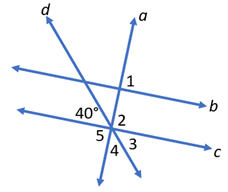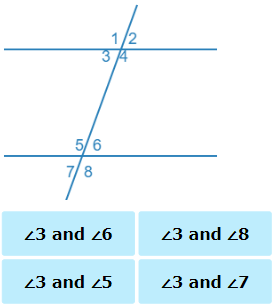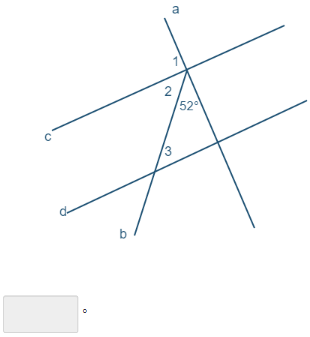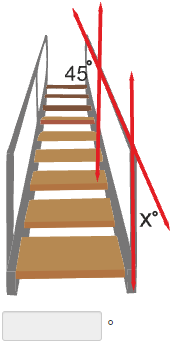
Parallel lines and Transversals
Concept
Calculate the missing angle, provided a pair of parallel lines, two transversals, and one or two angle measures.
Rules
Use the properties of the following angles to find the value of the missing angle.
Complementary angles are two angles that together form a right angle. The sum of two complementary angles is 90 degrees. To find the missing complementary angle, subtract the given angle from 90 degrees.
Supplementary angles are two angles that together form a straight angle. The sum of two supplementary angles is 180 degrees. To find the missing supplementary angle, subtract the given angle from 180 degrees.
Alternate interior angles are on opposite sides of the transversal and between the parallel lines.
Alternate exterior angles are on opposite sides of the transversal and on the outside of the parallel lines.
Corresponding angles are in the same position relative to the transversal and each of the parallel lines.
Example
Solution
Since a and b are perpendicular, angle 1 measures 90 degrees. Since b and c are parallel, angles 1 and 2 are corresponding angles. So, angle 2 measures 90 degrees as well. Angle 3 and 4 together add up to 90 degrees and angle 3 is a vertical angle to the 40 degree angle, so angle 4 equals 50 degrees
Practice Parallel lines and Transversals

Parallel lines are two or more lines that never intersect.
Perpendicular lines are two lines that intersect at a right angle.
Transversal line is a line that passes through two lines in the same plane at two distinct points.
Alternate interior angles are on opposite sides of the transversal and between the parallel lines.
Alternate exterior angles are on opposite sides of the transversal and on the outside of the parallel lines.
Corresponding angles are in the same position relative to the transversal and each of the parallel lines.
Vertical angles are a pair of opposite angles formed by intersecting lines. Vertical angles are always congruent.
Pre-requisite Skills
Complementary and Supplementary Angles
Finding Angle Measures
Angle Relationships
Related Skills
Congruent Lines
Classify Quadrilaterals
Quadrilateral Facts
Geometric Proof





